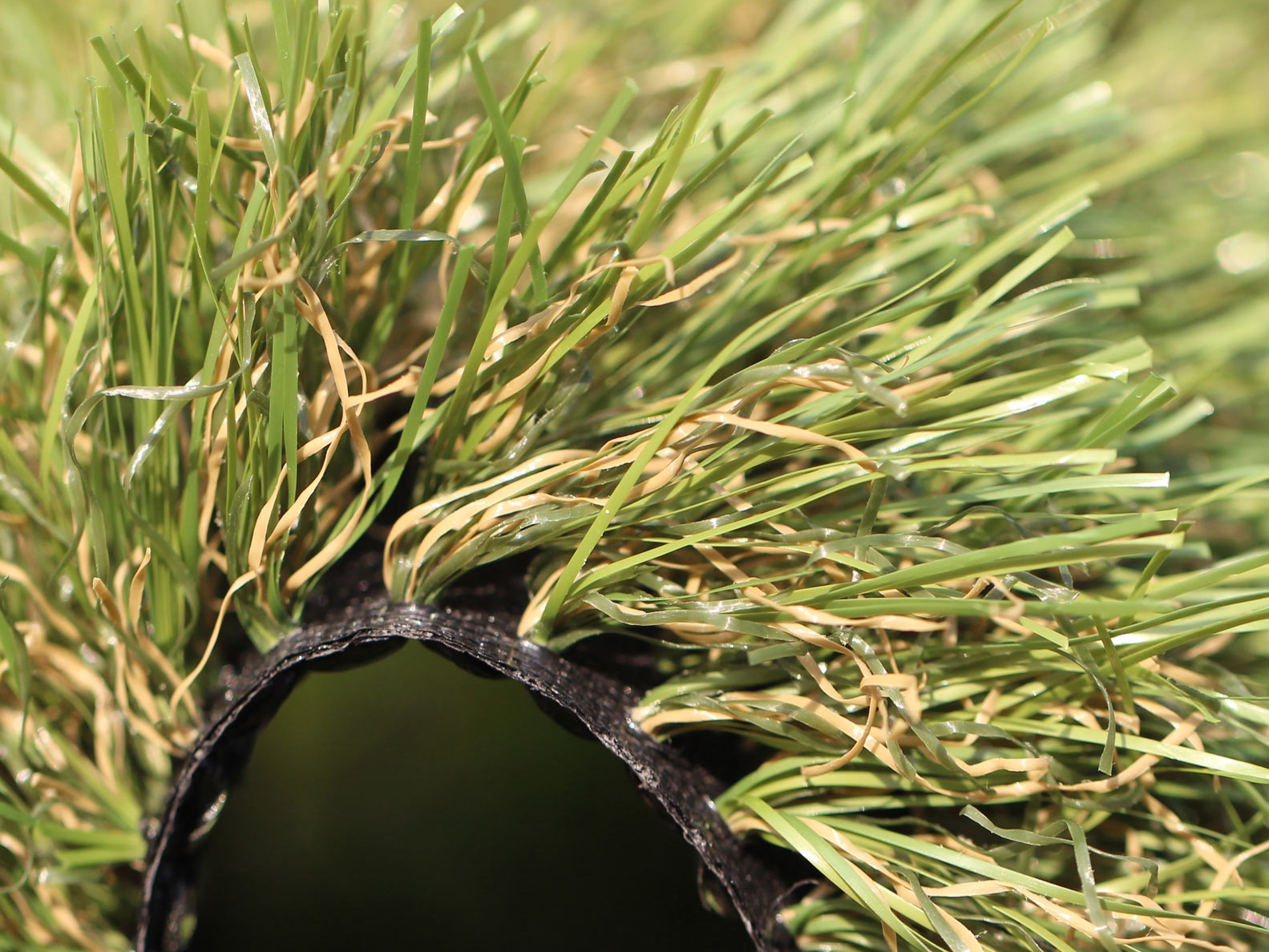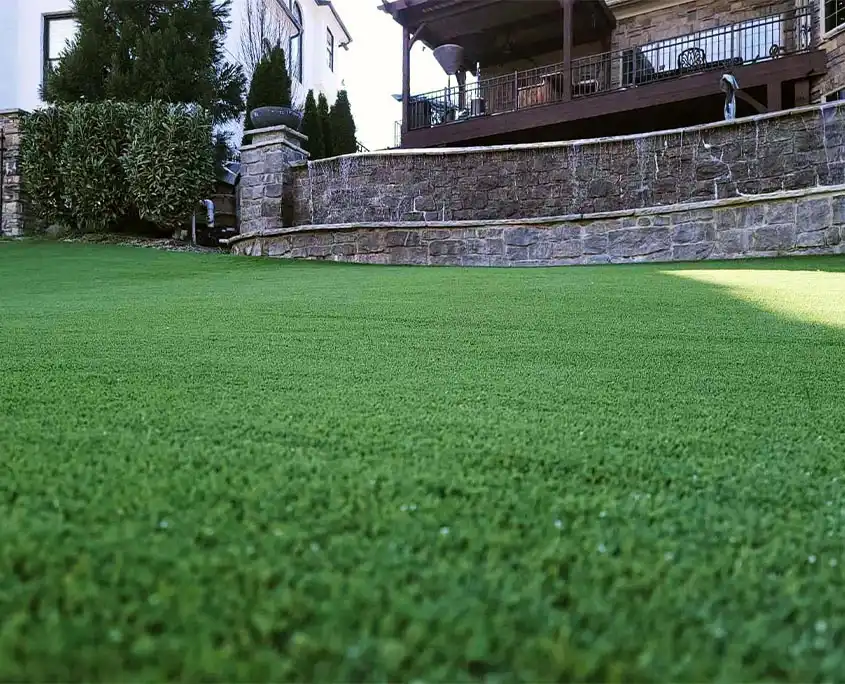Select Reputable Artificial Turf Companies Phoenix for Durable and Natural-Looking Grass
Select Reputable Artificial Turf Companies Phoenix for Durable and Natural-Looking Grass
Blog Article
Explore the Environmental Perks of Opting for Artificial Grass Solutions
The fostering of artificial grass remedies provides an engaging possibility to resolve pressing ecological obstacles. By significantly decreasing water usage and decreasing the application of damaging chemicals, these options not just advertise sustainable landscaping however likewise secure local environments.
Water Preservation Conveniences
Among the most considerable advantages of synthetic grass is its capability to preserve water. Traditional turf lawns require substantial watering, particularly in areas susceptible to drought or water limitations. In comparison, synthetic grass does not need watering, dramatically reducing the total need for water sources. This feature is specifically beneficial in dry areas where water shortage is a pressing worry.
By removing the requirement for normal watering, synthetic grass adds to lasting landscape techniques and aids alleviate the environmental influence of excessive water intake. The conservation of water prolongs to the decrease of runoff, which can lead to soil disintegration and river pollution.
In addition, the setup of synthetic lawn allows homeowners and districts to allocate water resources a lot more effectively, focusing on vital usages such as drinking water and agriculture. The shift towards synthetic grass not only promotes responsible water usage yet additionally aligns with broader environmental objectives focused on maintaining all-natural sources.
As communities progressively prioritize sustainability, the water conservation benefits of man-made lawn present a compelling case for its adoption in industrial and property landscape design tasks.
Reduced Chemical Usage
The shift to synthetic grass dramatically lowers the dependence on chemical therapies frequently utilized in all-natural lawn upkeep. Standard turf administration normally includes the application of plant foods, chemicals, and herbicides to advertise development and control parasites. These chemicals can pose dangers to human health, local wildlife, and the atmosphere, adding to dirt and water contamination.
On the other hand, synthetic grass gets rid of the need for these hazardous substances. As soon as installed, it needs very little upkeep, mainly containing regular cleaning and infrequent infill replenishment. This reduction in chemical usage not only profits the instant setting yet likewise contributes to more comprehensive environmental security. By decreasing the release of artificial substances into the community, synthetic turf advertises healthier soil and water supply.
In addition, the absence of chemical overflow connected with synthetic lawn installations aids shield regional rivers from contamination, sustaining aquatic life and keeping biodiversity. Arizona artificial turf. As communities progressively focus on sustainable techniques, selecting synthetic grass provides a feasible remedy that aligns with ecological preservation objectives. Via this shift, homeowner can appreciate lush green areas without jeopardizing eco-friendly wellness, leading the way for a much more sustainable future
Lower Carbon Footprint

In addition, the installation of man-made lawn can cause significant water preservation. All-natural lawns require significant amounts of water for watering, which not only adds to the carbon footprint connected with water extraction and therapy yet also strains local water resources. On the other hand, synthetic grass requires very little upkeep, calling for no watering, thereby considerably decreasing water usage and its connected power prices.
In addition, the durability of synthetic grass adds to its decreased carbon effect. With a life expectancy of as much as 15 years or more, the need for frequent substitutes is lessened, causing much less waste and reduced power usage in manufacturing and throwing away standard grass choices. Generally, synthetic lawn offers a lasting option for environmentally mindful landscape design.
Environment Preservation
Habitat conservation is a crucial factor to consider in the dispute over landscaping selections, particularly when contrasting fabricated grass to natural grass. All-natural lawn lawns typically require considerable maintenance, including the usage of herbicides, fertilizers, and chemicals, which can detrimentally affect local environments. These chemicals can seep right into the soil and rivers, hurting native vegetation and animals and interrupting neighborhood habitats.
In comparison, artificial lawn presents a possibility to lower the environmental footprint of landscaping. By going with artificial turf, homeowners can reduce the interruption of natural habitats connected with standard grass treatment methods. Synthetic lawn removes the requirement for dangerous chemicals, thereby securing neighboring wildlife and preserving the integrity of surrounding ecological navigate to these guys communities. Furthermore, the setup of synthetic grass can lead to the conversion of former turf locations into more biodiverse landscapes, such as pollinator yards or indigenous plant locations, which can sustain local wildlife.
Ultimately, the transition to synthetic grass not only conserves water and decreases maintenance efforts however likewise fosters a more unified partnership in between human tasks and the natural see it here surroundings, promoting environment conservation in the procedure.
Long-Term Sustainability
Lasting sustainability is an essential consider evaluating the advantages of synthetic turf over typical lawn lawns. One of the most significant advantages of synthetic grass is its sturdiness; it can last as much as 15-20 years with very little maintenance, whereas all-natural turf calls for constant reseeding and substitute. This longevity lowers the requirement for constant sources, such as water, plant foods, and pesticides, which are essential for keeping a healthy grass yard.
Furthermore, synthetic lawn adds to a decrease in carbon exhausts connected with lawn care tools. Standard yards frequently call for gas-powered mowers, leaners, and blowers, all of which add to air contamination. Phoenix turf companies. In contrast, synthetic grass gets rid of the requirement for such devices, advertising a cleaner setting
Furthermore, the manufacturing of man-made lawn significantly utilizes recycled products, improving its sustainability profile. As suppliers embrace environment-friendly methods, the ecological footprint of synthetic grass proceeds to diminish.

Final Thought
The adoption of synthetic grass services provides significant ecological advantages, consisting of substantial water preservation, decreased useful link dependence on unsafe chemicals, and a lower carbon impact. Artificial grass aids in protecting all-natural habitats by minimizing land disruption and promoting lasting sustainability through the use of sturdy materials. Jointly, these factors highlight the possibility of artificial turf to contribute favorably to ecological health and use a viable alternative to typical landscape design methods in a significantly resource-conscious world.
In comparison, synthetic grass does not need watering, substantially decreasing the total need for water resources. By minimizing the launch of synthetic compounds right into the ecological community, synthetic grass advertises much healthier dirt and water systems.
Furthermore, the setup of fabricated grass can result in considerable water preservation. In comparison, man-made turf requires minimal upkeep, requiring no watering, thereby significantly lowering water usage and its associated energy costs.

Report this page